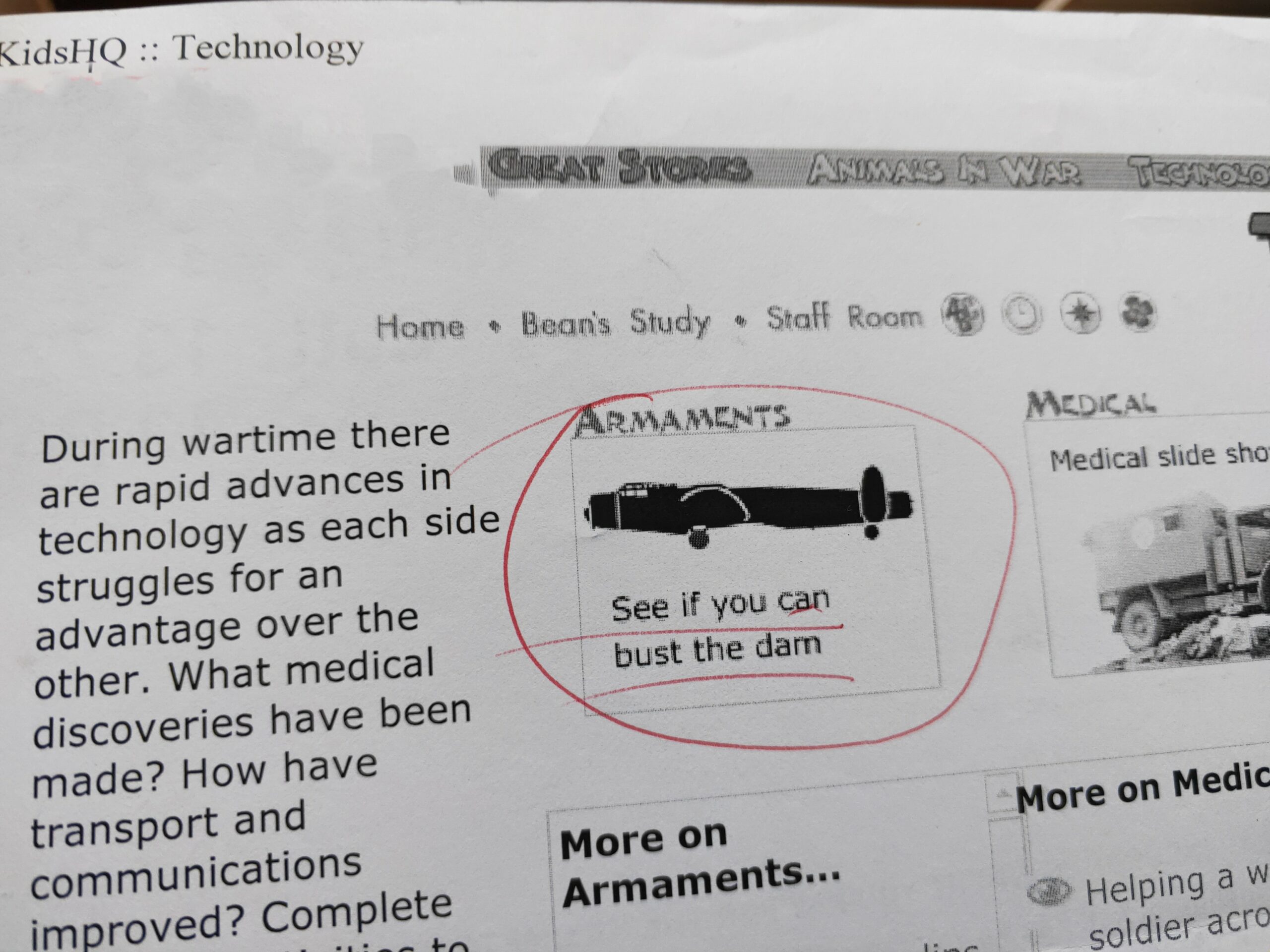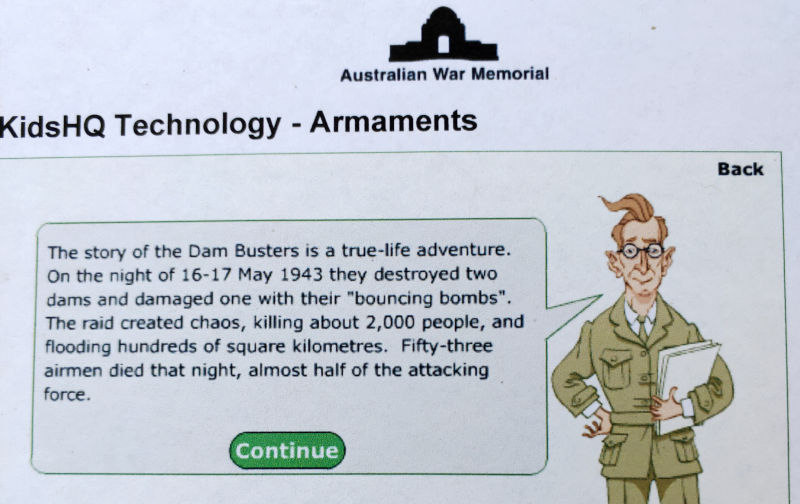The AWM, children, and war crimes
July 10, 2023
What do we make of our own national war memorial inviting children to have a go at planning attacks on civilian infrastructure which amount to war crimes?
Pearls and Irritations recently drew attention to a current Australian War Memorial exhibition on the 1943 Dambuster raids over Germany and the Memorials failure to mention the huge civilian toll. However the Memorials history of glossing over the human and other costs of our wars is far worse than that. It extends to inciting children to regard these raids not as war crimes (at least from todays perspective) but as an adventure.

Around a decade ago, the Memorials online KidsHQ Armaments activities included a dam-busting feature, under the heading Great Stories. The preliminary information stated The story of the Dam-Busters is a true life adventure. On the night of 16 17 May 1943 they destroyed two dams and damaged one with their bouncing bombs. The raid created chaos, killing about 2,000 people, and flooding hundreds of square kilometres. Fifty-three airmen died that night, almost half of the attacking force. The activity challenged young readers with See if you can bust the dam, and so it proceeded to engage them.

What do we make of our own national war memorial not so long ago inviting children to have a go at planning attacks on civilian infrastructure which amount to war crimes? Was this a brief lapse of judgement on the part of a junior official that somehow escaped scrutiny? Have the AWM Council and Director taken action since then to affirm that war is not actually a game and should never be presented as such? One would like to think so, but the signs are not encouraging.
Before it closed due to COVID, and then the AWM redevelopment, the childrens Discovery Zone at the Memorial was little better. It contained various action stations, where children could prepare for take-off in a helicopter in Vietnam (but please limit your time to two minutes per turn, the sign said), or play a game of cat-and-mouse in a Cold War era submarine.
Children could also play in a First World War trench - absolutely authentic except for the absence of blown-off body parts, the terror that sent men mad, the constant shriek of shells overhead, the lice, the mud in which men drowned, and just about everything else that characterised trench warfare. To be fair, there was a panel (just one) about a health hazard from trench warfare the fungal infection of trench foot (Place your foot inside the box to see what it was like).
In April - May this year, the AWM responded to questions in parliament from Senator David Shoebridge, on its childrens activities. The Memorial justified its approach by stating Play activities are recognised by educators as vital for supporting learning and the healthy development of physical, social, and cognitive skills, and it cited Article 31 of the UN Convention on the Rights of the Child (UNCROC):
- States Parties recognise the right of the child to rest and leisure, to engage in play and recreational activities appropriate to the age of the child and to participate freely in cultural life and the arts.
- States Parties shall respect and promote the right of the child to participate fully in cultural and artistic life and shall encourage the provision of appropriate and equal opportunities for cultural, artistic, and recreational and leisure activity.
Of course children have a right to rest, leisure, play and the rest of it, and education about war must be age-appropriate, but children should also be protected from propaganda about what war is really like. UNCROC refers to _the ideals proclaimed in the Charter of the United Nation_s, whose very first words are We, the peoples of the United Nations, determined to save succeeding generations from the scourge of war. Peace is a fundamental right of childhood. For the AWM to abuse the intent of the UNCROC like this is scurrilous.
Indeed, the Memorial is not only misleading children about the nature of warfare, it is encouraging them to regard military service as a responsibility. In November 2020, AWM Director Matt Anderson gave evidence (here, page 48) to the inquiry of the Senate Legal and Constitutional Affairs Committee into Nationhood, national identity and democracy. He stated that “We develop in young learners a deeper understanding of the connection between civic responsibility and military service by exploring the stories of Australians who have served.”
Setting aside the fact that such a purpose for the Memorial is not stated anywhere in the AWM Act, the Memorials approach is almost indistinguishable from it being a recruiting tool for the ADF. There follows then a need to greatly sanitise and yes glorify war, so that potential recruits are not scared off.
So, what will the redeveloped AWM hold in terms of childrens education? Judging by past performance, and the overall plans for the huge new space with plenty of gee-whizz weaponry on display, our children will be none the wiser about why wars occur, why they must be prevented and the steps that would help achieve this.
A half-billion dollar expansion that feeds a narrative of endless wars would be not only a national travesty, but a wasted opportunity to teach our children about peace.
The Medical Association for Prevention of War has asked the Memorial about the process by which the community - all of us - can have input into the new childrens galleries. We await their response.

